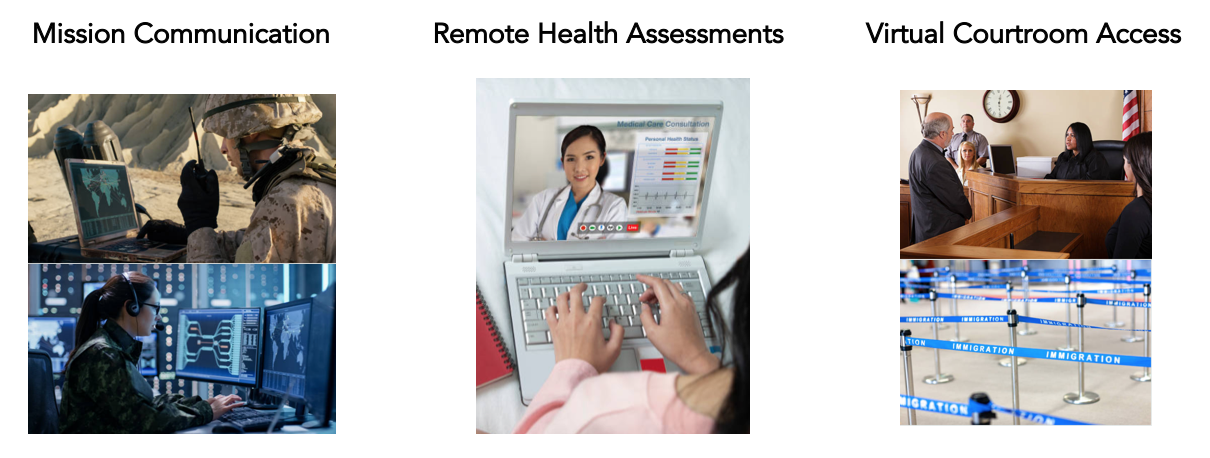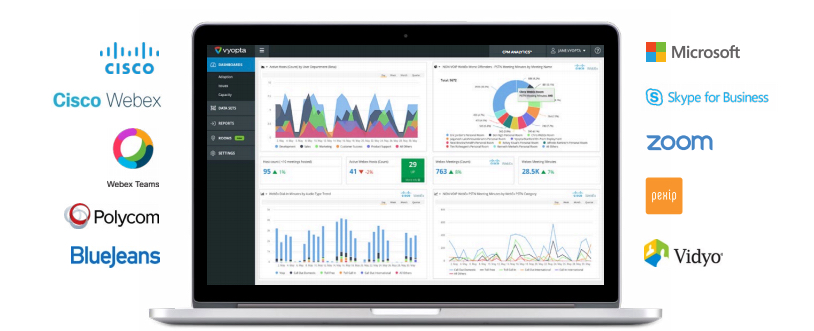
When it comes to technology innovations, the Federal Government has a history of slow adoption, but that’s all changing. Up to 25% of federal workers plan to retire in the next five years which means agencies will have to appeal to a younger workforce. Add to that the shifting attitudes on tech adoption as a means to complete mission-critical communication and collaboration, and you have a landscape in the federal space that is ripe for the implementation of communication and collaboration technology.
Emerging technologies are no longer just a ‘wave.’ To borrow a quote from a colleague, ‘Digitization is a tsunami of change.’ It’s hard for the federal government to keep pace— especially in light of the need to reskill the workforce, shift from risk averse to risk tolerant, and increase efficiencies and interoperability within the IT landscape. Five years ago, when I was serving as the CIO/G6 for the Army, we thought all things IT had to be government owned and operated. As we face the digital tsunami, there’s a growing recognition of the value of Software-as-a-Service (SaaS), Platform-as-a-Service (PaaS), and Infrastructure-as-a-Service (IaaS). These approaches just make sense. I personally am realizing that Everything-as-a-Service (EaaS) is the way to deliver IT. The federal government can’t afford to invest in every rapid-fire technology advancement—but it can’t afford to miss out on them, either.
– Lt. Gen. Susan Lawrence (U.S. Army, Ret.), Managing Director for the U.S. Army and Air Force
Excerpted from Accenture’s 2018 The State of Federal IT
Unified Communications and Collaboration Deployments
Each federal agency is tasked with a unique but vital mission, and each has deployed their unified communications (UC) environment to support that mission. Even though each deployment is different, one thing agencies have in common is the understanding of how critical it is to have detailed insights into their UC environment to support their defined mission.

UC has become more critical across many government services including:
- Mission Communication which is critical for the armed forces such as the US Army.
- Remote Health Assessments which allow the VA to provide more services to more veterans in more locations across the country.
- Virtual Courtroom Access provides wider courtroom access without geographic limitation.
Quality and uptime are critical to these agencies in order to perform these functions.
Even while UC environments have become more complex in response to demand for these services, the IT support team is not growing at the same rate. Whether through budget cuts or agency directives, they are expected to deliver better business outcomes without additional resources, and in some cases with fewer personnel resources due to cuts.
Multi-vendor Environments Increase Complexity
As these technology deployments happen, whether agencies are moving to the cloud, adding more endpoints, and bridges to help them extend the reach of their services, the agencies are dealing with a complex ecosystem of vendors that make it especially difficult to be proactive and to identify issues before they cause disruptions to service quality.

Collaboration Performance Management (CPM)
Network Performance Management (NPM) and Application Performance Management (APM) are likely terms you’ve heard bandied about in the IT sphere. These services have developed to identify issues as they happen and before they disrupt service. They look at infrastructure and software to understand the impact to service quality. That piece is simple though, it’s computers talking to computers.
Collaboration Performance Management has an additional layer of complexity in that we are adding a human interaction component when you are talking about voice or video calls or other collaboration methods.
Why is one conference room always fully booked while the one across the hall is never used?
Is there an echo in that room?
Is there a faulty endpoint?
When you have metrics that illustrate low room utilization or low adoption by users, then you have the data you need to correct the issue and increase utilization which becomes critically important when you’ve allocated a large portion of expensive real estate to meeting space.
What we’re really talking about with CPM is people, technology, and space, which are the three most expensive cost elements for an organization to manage. That’s why insights into those areas are extremely critical.
What To Look for In A Collaboration Performance Management Solution
Reputation is extremely important in the federal space so when considering a solution to help manage CPM, you need a secure on-premise solution that provides:
- A purpose-built solution for collaboration
- Insights about people, space, and technology
- Alerts for proactive notifications
- Support for multiple mixed environments
- Intuitive and easy troubleshooting
- User error, network, and infrastructure causes
- Adoption and usage patterns
To see how Vyopta’s CPM Suite provides a single pane of glass for insights on people, space, and technology view the Online Guided Tour.

Angela Shori is a business writer and technology marketer with over 20 years of experience. She holds an M. A. in Advertising from the University of Texas and writes about unified communications, cloud technology, innovation, and the future of work -- sometimes through the lens of Star Wars. You can find her online at LinkedIn and Twitter.




